On the surface, it would seem that Pope Urban VIII (1568-1644) and King Philip IV of Spain (1605-1665) were distinctly different types of rulers: one was a religious ruler, the other was a monarch. But scratch below that surface and, as there were differences, so there were similarities, too. Francis Haskell says that Urban’s role had three components to it. He was the spiritual leader of the Catholic church; he was an absolute monarch of the significant and wealthy Papal States; and he headed a proud, ambitious family.1 Each head equally applied to Philip. His secular role as the ruler of the largest empire in the world was his notional prime one, but as an absolute monarch – one with a divine right to rule, ordained by God – and as defender of the faith, it also had a religious component to it. And the familial component overlaid it all – it was a hereditary, dynastic system which cast him into the role.2 To these similarities can be added that they ascended to power roughly contemporaneously (Philip succeeded his father in 1621, while Urban was elected in 1623) and, relevantly here, their patronage of the arts: both adeptly utilised the arts to showcase their power. And yet that is where a bifurcation occurs, because the ways in which each used the arts to articulate, justify and enhance their power were starkly different. This essay will argue that it was the nature of their power which mitigated the difference of approach.
A pope held power only for as long as he lived, and his claims of legitimacy and his legacy needed to be established in that time, however fleeting it might be. Additionally, the reality of Urban’s claim to power was that he had been elected pope. To claim that his dynastic heritage and majesty was anything more than tenuous, he required imaginative association. Mere narratives would not do; there were no narratives to relate. So, allegory played an important role in the artworks he used to depict his power. It was only by association with historical religious and mythological symbols that he could shoehorn his image into one of greatness. By contrast, a king of the supremely powerful Spanish Habsburgs was descended from a long line of illustrious ancestors. In his case, it was not legitimacy that was of the essence, but rather the depiction of majesty. In the nature of Spanish kings, Philip lived a very restrained, almost austere life and his appropriation of the arts to project majesty and power directly reflected that nature.3 There was a very simple and compact range of depiction that art in the Spanish court had to display: military might defending both the realm and the faith, and demonstration of dynastic continuity.4 And while heroic and mythological figures could be appropriated to strengthen those depictions, there was no need for blatant and overt symbolism. The magnificence of the Spanish king and who and what he represented were already strong articles of faith, and art was used as a means to augment that magnificence, rather than proclaim it. This essay will discuss two works from St Peter’s basilica - the baldacchino and Urban’s tomb, both by Gianlorenzo Bernini - and Pietro da Cortona’s Triumph of Divine Providence in the Palazzo Barberini to illustrate Urban’s approach, while Hercules Fighting with Antaeus by Francisco de Zurbaran, the Surrender of Breda by Diego Velasquez, both in the Hall of Realms in the Buen Retiro in Madrid, and a Velasquez portrait of Philip will demonstrate Philip’s approach.
The Palazzo Barberini was the Barberini’s family palace, and Urban chose the fresco painted ceiling of the Great Hall (fig. 1) to make his strongest secular statement.5 Bees and a laurel wreath, symbols representing the Barberini, form an escutcheon held up by the three theological Virtues. Divine Providence orders Immortality to crown them with a halo of stars. Four subsidiary stories are depicted in and on the frame, all variously signifying Urban’s virtuous rule. The propaganda is laid on thickly: with the aid of Wisdom and Strength and the Virtues, blessed by Divine Providence, the divinely appointed pope can carry out his programme providing peace and prosperity to all.6
The Surrender of Breda (fig. 2) by Velasquez was in the Hall of Realms, the main reception room in Philip’s suburban palace, the Buen Retiro. Velasquez’s painting is an exemplar that it is how you conduct yourself that confirms your majesty. It depicts a surrender scene following an important victory for the Spanish in the war against the Dutch.7 The surrender which Velasquez portrays is quite unlike normal artistic depictions of such a scene. Traditionally a scene of triumph and humiliation, instead this is quite different: the defeated is not alone when meeting his victor; Spinola and Justin of Nassau, the main protagonists, are both dismounted, suggesting an equal footing; and Justin is beginning to kneel but is interrupted in doing so by Spinola’s hand on his shoulder. All elements coalesce to portray a magnanimous and clement victor. This exemplifies the majesty of the Spanish king. As Jonathan Brown and John Elliott say, “Victories of arms made a king powerful; clemency and magnanimity made him great.”8
The Pietro ceiling and the Velasquez painting are both works that were housed in what Brown and Elliott call a Hall of Princely Virtues.9 Such halls had a long-standing tradition in glorifying a ruler’s qualities. During the 16th century, they were decorated to ever increasing heights of splendour such that, by the time of Urban and Philip, they had become essential to palace decoration. Brown and Elliott note three types of expression were employed – allegory, analogy and narrative. Historical events would be shown in narrative form, while allegory would demonstrate moral qualities.10 Urban had to pull out all the allegorical stops to get his message across; by contrast, Philip had the luxury of being able to draw on narrative to exemplify a particular part of his power, in this case his clemency. Pietro’s ceiling is majestic in its composition, and saturated with imagery, but it needed to be to make the point.
While the Palazzo Barberini ceiling made a secular statement, Urban had already made a religious statement with his first major commission: a baldacchino for the interior of St Peter’s. St Peter’s held special significance for the Catholic church as the burial place of St Peter, the first Bishop of Rome. Situated over St Peter’s tomb, Bernini’s baldacchino (fig. 3), a canopy structure, is supported by enormous twisted Solomonic columns, themselves highly resonant with Solomon’s temple in Jerusalem.11 Urban stamped his mark on the work with arberini imagery everywhere: bees over all the columns, the sun over the columns’ capitals and laurel vines twisting their way up the columns.12 While performing its central role as a marker of St Peter’s tomb, it highly successfully associates the Barberini family with the work.13 The unashamed use of Barberini imagery and the strong references to the origins of Christianity and St Peter establish a clear claim to a dynastic right to rule. Urban is not merely saying he is pope only by the grace of God and His cardinals who elected him in conclave; rather, he is saying he comes from an illustrious family which is connected to St Peter himself.
In the Hall of Realms, a cycle of Hercules’ Labours was devised by Zurbaran. Primarily a symbol of virtue and strength, in the 16th century Hercules became a symbol of the prince: Charles V’s emblem had Hercules’ pillars incorporated into its design; Hercules had also acquired a reputation as a conqueror of discord; and Hercules, like Philip, was identified with the sun.14 In some of the Labours depicted, the resort to allegory can be seen. But still, the clarity of message is much more evident than it is with Urban. That is because Zurbaran portrays Hercules as an everyday man, performing heroic acts with unusual strength.15 In Hercules Fighting with Antaeus (fig. 4), Hercules gazes straight at us as he wrestles with Antaeus. His face is identifiable to viewers: he looks like one of us. In the same way, the viewer can identify with Philip as a human being, but one who has a superhuman role to play.
The last two works are both in their way personal portraits, but they too illustrate the difference in approach. The baldacchino showcased Urban’s power in the moment, but he needed something equally emphatic to secure his legacy once he had gone. He commissioned Bernini again, this time to construct his tomb (fig. 5). It comprises a gigantic bronze of Urban, his right hand raised in benediction.16 He is shown enthroned, above and behind a marble and bronze sarcophagus, with marble sculptures either side of the sarcophagus. Urban’s hand echoes both Roman imperial and religious antecedents.17 As much a gesture of command as it is of blessing, it is a combination of Urban’s familial and religious claims to power.18 And to anchor the Barberini family’s dynastic claims, the ubiquitous Barberini bees crawl up the sarcophagus. As with both Pietro’s ceiling and the baldacchino, Urban’s triumphant majesty had to be trumpeted by the use of complex allegorical imagery. For Urban, a simple depiction of his likeness would not be sufficient. The message needed to be amplified by connections to notions of majesty and triumph.
The portrait of Philip (fig. 6) is, by the standards of royal portraiture of the time, restrained and simple. It is a straightforward portrait of a man, almost any high born man since, other than the Order of the Golden Fleece insignia, there is nothing to suggest Philip’s royal status.19 Brown and Elliott explain this befitted Philip’s status as a Habsburg king. “[They] did not have to advertise their power and majesty in quite the same way as did lesser potentates ... The name of the king of Spain was synonymous with political might and grandeur.”20 It was more important for Philip to emphasise his dynastic claim than it was to cloak himself in complicated symbols.21 Philip is drawing attention to the memory of great rulers preceding him, who were depicted in a similarly austere manner. The Habsburgs cultivated the notion that portraiture should emphasise the person rather than the office, and that a ruler’s virtues, not symbolic attributes, defined a good ruler. 22 To achieve this, a court portrait should reproduce the distinctive features as realistically as possible; for the Habsburgs, that meant emphasising the Habsburg jaw, the long nose and the narrow head. Each of those elements was in Velasquez’s painting and so that was all that was needed.23 While Urban’s tomb is majestic, triumphal and commanding, Philip’s portrait is the polar opposite form of portrayal. No ostentation was needed here; all that was needed was a simple depiction of his likeness; that is, of an identifiable Habsburg king.
The works discussed each demonstrate the quite different approaches to the use of art to depict power. Because of the nature of his power, Urban had to work much harder than Philip to identify himself as powerful and dynastically connected. The means for doing so was the use of complex allegorical messages, the continual use of Barberini symbols to anchor his name to those messages and the association with triumphant majesty. Because Philip’s power was much more innate it was much simpler for him, and his art reflected that simplicity: a single message and clarity of that message were the hallmarks of the art discussed. Whether it was clemency in the Surrender of Breda, the identification with an ordinary but heroic figure, or the Habsburg characteristics of Philip’s portrait, they all illustrate the belief that a simple point made strongly would be more powerful than a complex allegorical composition. And that, in essence, encapsulated the difference between Urban, Philip and their approaches to art.
Bibliography
Brown, Jonathan, Enemies of Flattery: Velasquez’ Portraits of Philip IV in The Journal of Interdisciplinary History, Vol. 17, No. 1, The Evidence of Art: Images and Meaning in History (Summer, 1086), pp. 137-154, MIT Press
Brown, Jonathan, Painting in Spain: 1500 - 1700, Yale University Press, New Haven, 1998
Brown, Jonathan and Elliott, John H., A Palace for a King: The Buen Retiro and the Court of Philip IV Yale University Press, New Haven, 1980
Brown, Jonathan and Garrido, Carmen, Velasquez: the Technique of Genius, Yale University Press, New Haven, 1998
Elliott, John H. Philip IV of Spain: Prisoner of Ceremony in Dickens, A. G. (ed.) The Courts of Europe: Politics, Patronage and Royalty 1400 – 1800, Thames and Hudson, London, 1977
Harris, Ann Sutherland, Seventeenth-Century Art & Architecture, Pearson Education, New Jersey, 2005
Haskell, Francis, Patrons and Painters: a study in the relations between Italian art and society in the age of the Baroque, Yale University Press, New Haven, 1980.
Hibbard, Howard, Bernini, Penguin Books, Middlesex, 1965
Hook, Judith A. Urban VIII in Dickens, A. G. (ed.) The Courts of Europe: Politics, Patronage and Royalty 1400 – 1800, Thames and Hudson, London, 1977
Rietbergen, Peter, Power and Religion in Baroque Rome: Barberini Cultural Policies, Brill, Leiden, 2006
Stratton-Pruitt, Suzanne L. (ed), The Cambridge Companion to Velasquez, Cambridge University Press, Cambridge, 2002.
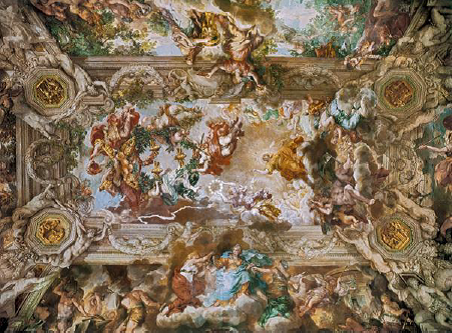
Figure 1. The Triumph of Divine Providence, (1633 – 1639) in the Great Hall of the Palazzo Barberini by Pietro da Cortona, 600 x 443
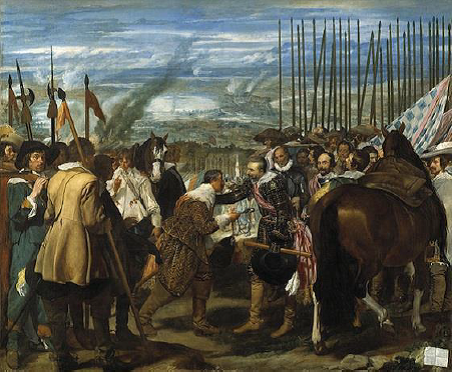
Figure 2. The Surrender of Breda (1634 – 1635) by Diego Velasquez, 560 x 462, now in the Museo del Prado, Museo del Prado, Madrid
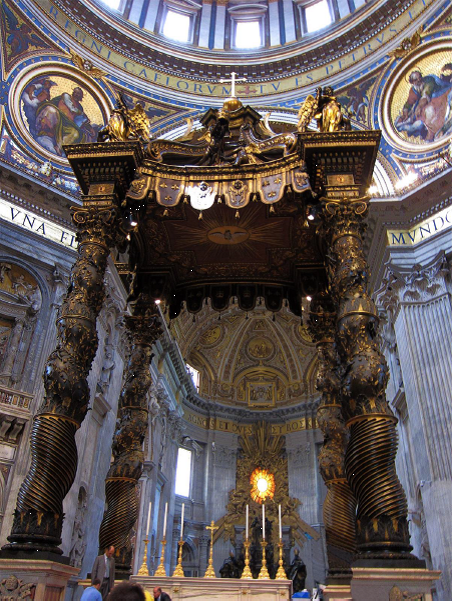
Figure 3. St Peter’s baldacchino (1623 – 1634) by Gianlorenzo Bernini, 1500 x 2000

Figure 4. Hercules Fighting with Antaeus (1630) by Francisco de Zurbaran, 1000 x 860, now in the Museo del Prado, Madrid
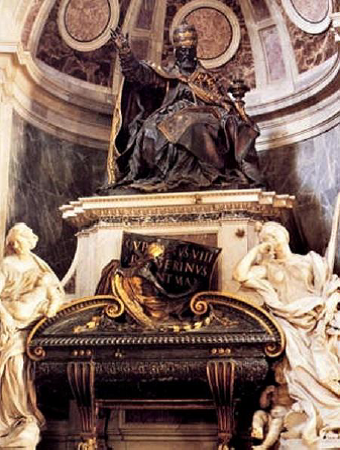
Figure 5. The Tomb of Urban VIII (1627 – 1649) in St Peter’s by Gianlorenzo Bernini, 450 x 600
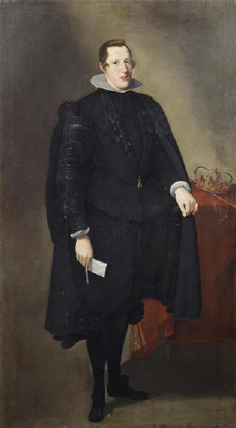
Figure 6. Portrait of Philip IV (1621) by Diego Velasquez, 314 x 570, now in the Museo del Prado,






